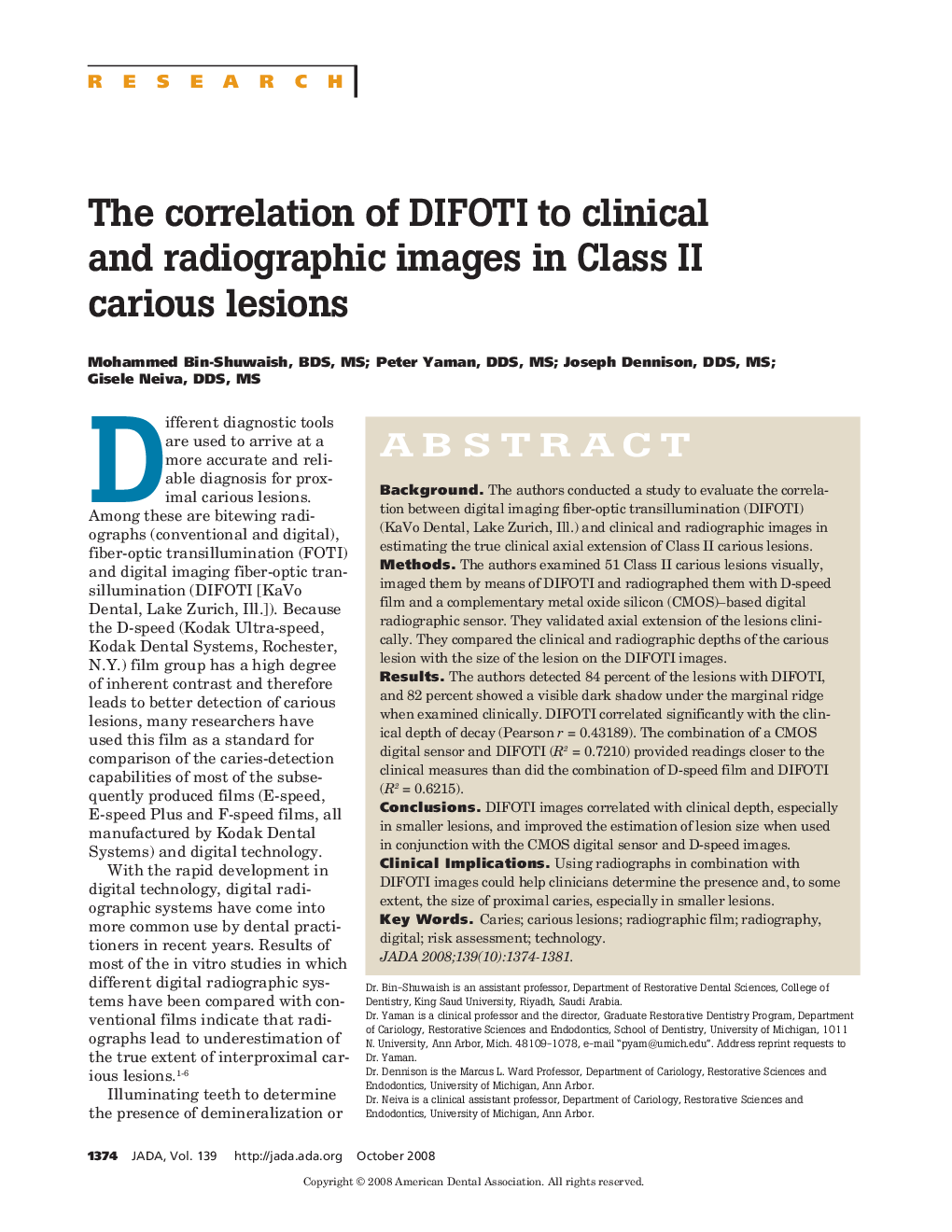| Article ID | Journal | Published Year | Pages | File Type |
|---|---|---|---|---|
| 3139180 | The Journal of the American Dental Association | 2008 | 8 Pages |
ABSTRACTBackgroundThe authors conducted a study to evaluate the correlation between digital imaging fiber-optic transillumination (DIFOTI) (KaVo Dental, Lake Zurich, Ill.) and clinical and radiographic images in estimating the true clinical axial extension of Class II carious lesions.MethodsThe authors examined 51 Class II carious lesions visually, imaged them by means of DIFOTI and radiographed them with D-speed film and a complementary metal oxide silicon (CMOS)–based digital radiographic sensor. They validated axial extension of the lesions clinically. They compared the clinical and radiographic depths of the carious lesion with the size of the lesion on the DIFOTI images.ResultsThe authors detected 84 percent of the lesions with DIFOTI, and 82 percent showed a visible dark shadow under the marginal ridge when examined clinically. DIFOTI correlated significantly with the clinical depth of decay (Pearson r = 0.43189). The combination of a CMOS digital sensor and DIFOTI (R2 = 0.7210) provided readings closer to the clinical measures than did the combination of D-speed film and DIFOTI (R2 = 0.6215).ConclusionsDIFOTI images correlated with clinical depth, especially in smaller lesions, and improved the estimation of lesion size when used in conjunction with the CMOS digital sensor and D-speed images.Clinical ImplicationsUsing radiographs in combination with DIFOTI images could help clinicians determine the presence and, to some extent, the size of proximal caries, especially in smaller lesions.
